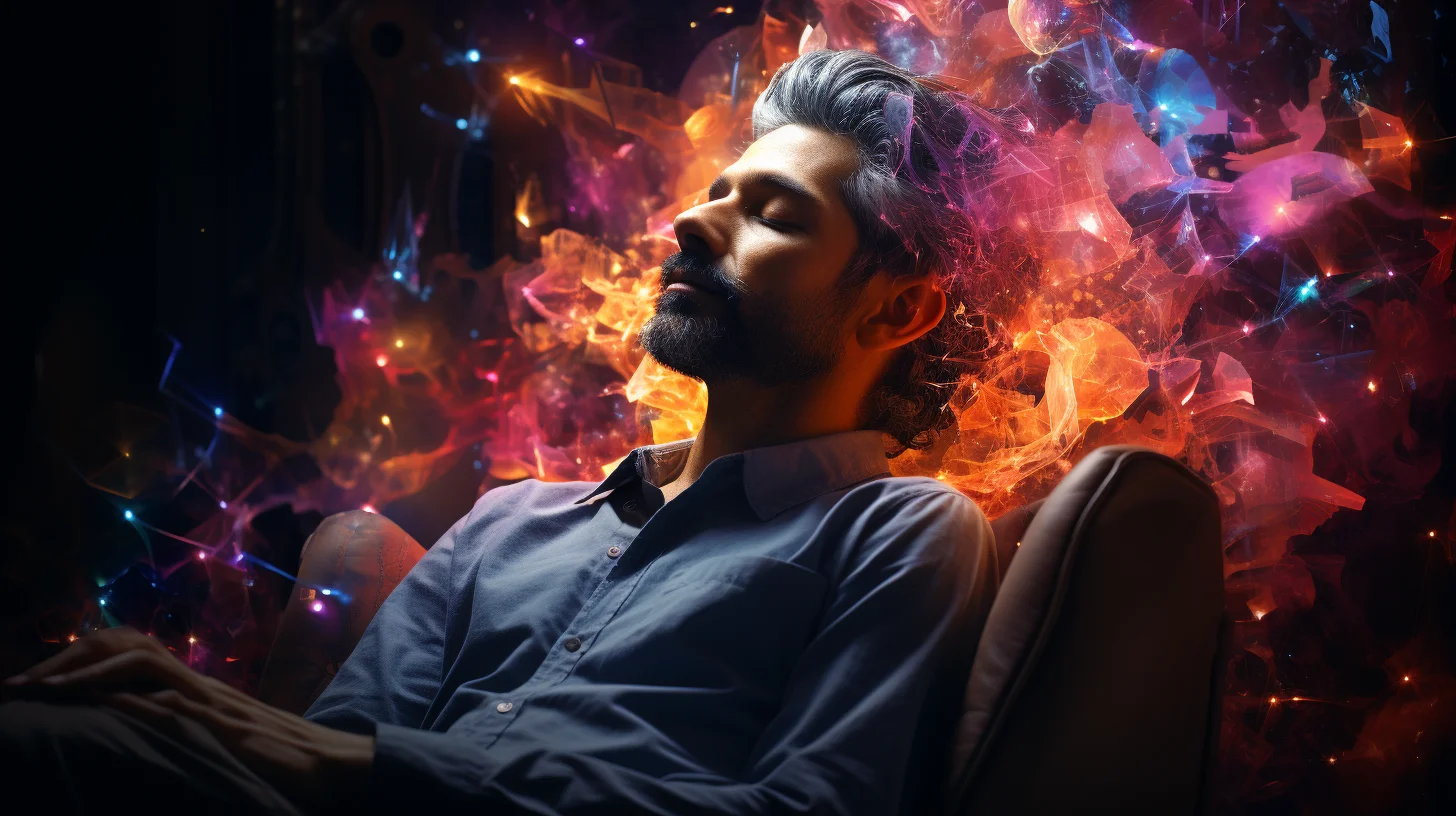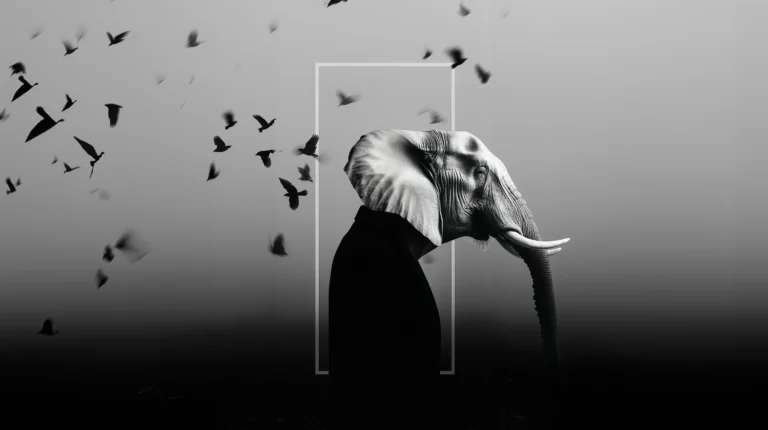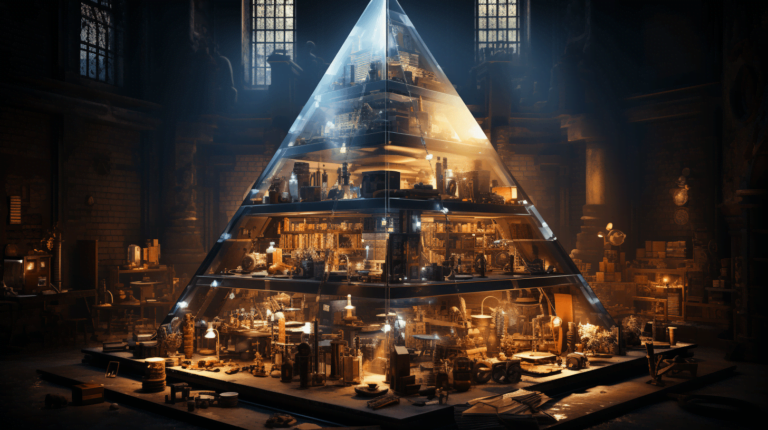Navigating the Astral
Navigating the Astral
A Comprehensive Guide to the Astral Body and Personal Growth
Table of Contents:
Introduction
- Definition of the Astral Body or Peri-spirit
- Origins of the Concept
- Introducing the Astral Plane
Historical Overview
- Ancient Civilizations and the Astral Body
- Occult Traditions and Teachings
Characteristics of the Astral Body
- Composition and Structure
- Connection to the Physical Body
- Relation to the Etheric and Mental Bodies
Astral Projection and Out-of-Body Experiences (OBEs)
- Historical Accounts and Practices
- Techniques for Inducing Astral Projection
- Benefits and Potential Risks
The Chakras and the Astral Body
- Definition and Significance of Chakras
- How Chakras Influence the Astral Experience
The Intersection of Occult and Modern Psychology
- Carl Jung and the Concept of the Astral Body
- Transpersonal Psychology and its Insights
- Psychosomatic Connections to the Astral Body
Psychological Perspectives on Astral Phenomena
- Dreams vs. Astral Experiences
- Therapeutic Implications of Astral Experiences
- Debates and Controversies in the Psychological Community
Tools and Techniques for Navigating the Astral Plane
- Protective Measures and Grounding Techniques
- Enhancing Astral Vision and Clarity
- Encounters with Astral Entities
The Future of Astral Body Studies
- Advancements in Neuroscience and the Astral Body
- Potential Technological Tools for Exploration
- Ethical Considerations
Conclusion
- Reflection on the Importance of the Astral Body in Personal Growth
- Encouraging Safe Exploration and Personal Discovery
Introduction
Definition of the Astral Body or Peri-spirit
The Astral Body, sometimes referred to as the Peri-spirit, is a concept that’s like a bridge between the seen and the unseen parts of ourselves. In simple words, it’s like a ‘ghostly’ version of our physical body. Imagine it as a glowing outline that surrounds and mimics our actual body. But instead of flesh and bones, it’s made up of energy and emotions.
Origins of the Concept
The idea of having a separate, spiritual body isn’t new. For centuries, people from different parts of the world have talked about it, each in their own way.
Ancient Egyptians had a belief in the ‘Ka’, which they saw as a person’s spirit double. This ‘double’ lived on after someone died. Meanwhile, in ancient Greece, they talked about the soul or ‘psūkhē’, which had qualities similar to what we now call the Astral Body. And in places like India, there are ancient writings that mention a ‘subtle body’ or ‘sūkṣma śarīra’, which travels to different realms during dreams or meditation.
These old tales and beliefs show that no matter where or when, humans have always felt that there’s more to them than just their physical bodies.
Introducing the Astral Plane
Now, if our Astral Body is this ‘ghostly’ version of us, where does it go or exist? This is where the Astral Plane comes in.
Think of the Astral Plane as a vast, limitless space that’s just next door to our world. But instead of streets, houses, or trees, it’s filled with thoughts, emotions, and dreams. It’s like the stage where our Astral Body acts and interacts.
Have you ever had a dream where everything felt so real, and then you woke up wondering if it was just a dream? Or have you ever felt like you were floating above your body? These could be glimpses of the Astral Plane.
The idea here is that, while our physical body stays on Earth, our Astral Body can travel and experience this other dimension. And while it might sound like fantasy, many people believe that with practice, we can all explore the Astral Plane, learn from it, and use that knowledge to grow as individuals.
Historical Overview
Ancient Civilizations and the Astral Body
Throughout history, the belief in a form beyond the physical has been deeply rooted in the psyche of various civilizations. Each culture had its own understanding, rituals, and names for this phenomenon.
- Egyptians: The ancient Egyptians held a profound belief in the afterlife and the journey of the soul. They called the astral body the “Ka”. The Ka was a person’s double, an ethereal twin, which lived on after death. Pyramids and tombs were not just for the physical body but were also designed to aid the Ka on its journey in the afterlife.
- Greeks: In ancient Greece, the concept of the soul or “psūkhē” was central. They believed that the soul separated from the body upon death and ventured into the underworld. The soul’s purity determined its final resting place, with the pure ascending to Elysium.
- Hindus: The ancient Indian scriptures often talk about the “sūkṣma śarīra” or subtle body. This is not the physical body but an energy form which can travel to other dimensions. The concept of reincarnation, widely accepted in Hinduism, also plays into this, where the subtle body carries the imprints of past lives.
- Chinese: In ancient China, the idea of “Qi” or vital energy was crucial. While not exactly the same as the astral body, the flow and balance of Qi are essential for spiritual and physical well-being.
These ancient beliefs show a universal curiosity about what exists beyond the tangible. While terminologies differed, the essence remained the same: a conviction that there’s more to our existence than just the physical realm.
Occult Traditions and Teachings
The term “occult” often conjures images of the mysterious, arcane rituals, and esoteric knowledge. Throughout the ages, secret societies, traditions, and schools of thought have delved deep into the mysteries of the astral body and its capabilities.
- Hermeticism: Rooted in ancient Egyptian and Greek teachings, Hermeticism believes in the correspondence between the macrocosm (the universe) and the microcosm (the individual). The astral body, in this tradition, is a bridge between the earthly and the divine.
- Theosophy: Founded in the late 19th century, Theosophy combines Eastern and Western philosophies. It speaks of several different bodies for each individual, with the astral body being one of them. The astral body is linked to desires and emotions.
- Rosicrucianism: An esoteric order that believes in the study of ancient mystical, philosophical, and religious teachings. They hold the view that humans are dual beings with both a physical and a spiritual (astral) component.
- Kabbalah: A form of Jewish mysticism, Kabbalah speaks of the “neshama”, a higher soul, which can ascend and access divine realms.
These occult traditions, while differing in rituals and specifics, all touch upon the idea of an astral form. They offer techniques, teachings, and insights on how to understand, access, and harness the potential of the astral body.
Let’s delve into the distinctions between the Astral Body, Soul, and Spirit according to occult traditions:
Astral Body
The astral body, often referred to as the “emotional body” or “desire body,” is an intermediate, subtle energy layer that exists between our physical body and our higher mental faculties. It is associated with feelings, emotions, and desires. The astral body is believed to be the vehicle that facilitates out-of-body experiences or astral travel. It’s said to be tethered to the physical body by the “silver cord,” ensuring a safe return after astral journeys. This body vibrates at a higher frequency than the physical body and can traverse the astral plane, a dimension of reality distinct from the physical.
Soul
The soul is a complex and multi-faceted aspect of our being in occult teachings. It is often considered the eternal, individualized essence that carries the sum of our experiences, lessons, and karmic patterns across lifetimes. Unlike the astral body, which is more transient and linked to our current incarnation, the soul is immutable and accumulates wisdom across many lifetimes. It is the seat of our personality, personal memories, and individual consciousness. The soul evolves, learns, and grows through various incarnations, aiming for spiritual enlightenment and union with the divine source.
Spirit
In occult understanding, the spirit is the divine spark or the higher self within us. It is the pure, unadulterated essence that connects us to the universal consciousness or the Source. While the soul is individual and carries personal experiences, the spirit is universal, timeless, and unchanging. It remains untainted by earthly experiences and represents our truest, most elevated form. The spirit provides guidance, intuition, and a connection to the cosmic consciousness. It’s the highest aspect of our being, seeking to guide the soul towards enlightenment and eventual reintegration with the divine.
To simplify, think of it like this: The astral body is our emotional vehicle in this lifetime, allowing us to experience feelings and astral journeys. The soul is the core of our individual identity, evolving over many lifetimes and carrying our personal experiences and lessons. The spirit is our unchanging, divine essence that remains connected to the universal source, offering guidance and wisdom.
Different traditions might have varying interpretations, but these definitions provide a general overview based on prevalent occult teachings. It’s essential for readers to approach these concepts with an open mind and find personal resonance with the ideas presented.
In this historical overview, we see a tapestry of beliefs and teachings from different times and cultures, all weaving the story of our quest to understand the world beyond the physical.
Characteristics of the Astral Body
Composition and Structure
At its core, the Astral Body is a manifestation of our subtle energy. Unlike our tangible, physical body made up of cells, tissues, and organs, the Astral Body is ethereal, made up of a shimmering, luminous substance.
- Luminosity: Many who claim to have seen or felt the Astral Body describe it as glowing or having a certain radiance. This radiance is believed to be the reflection of our emotional and spiritual health.
- Fluidity: Unlike the structured anatomy of our physical body, the Astral Body is fluid. It can change shape and size, often resonating with our feelings or thoughts. For example, it might expand during moments of joy and contract during moments of fear.
- Vibrational Frequency: Everything in the universe vibrates, and so does the Astral Body. Its frequency is higher than that of the physical body, allowing it to interact with other higher vibrational realms, like the Astral Plane.
Connection to the Physical Body
The Astral Body isn’t floating around independently; it’s intimately connected to our physical body.
- Silver Cord: Often described in astral projection experiences, there’s said to be a ‘silver cord’ that connects the physical body to the astral counterpart. This cord ensures that no matter how far the Astral Body travels, it can always find its way back.
- Emotional Mirror: Our emotional state often reflects in our Astral Body. Intense emotions can cause ripples or disturbances in its composition. For instance, sustained negative emotions might make the Astral Body murky, while positive emotions can enhance its luminosity.
- Health & Well-being: The health of our physical body can influence the Astral Body. Chronic illnesses or imbalances might manifest as irregularities in the Astral Body. On the flip side, disturbances in the Astral Body can sometimes precede physical ailments.
Relation to the Etheric and Mental Bodies
The Astral Body is just one layer in the multi-dimensional tapestry of our existence. Closest to the physical body is the Etheric Body, followed by the Astral and then the Mental Body.
- Etheric Body: Think of this as the energetic blueprint of our physical body. It’s the life-force that keeps us alive. It vibrates at a frequency just slightly higher than the physical body, making it almost tangible.
- Astral Body: As we’ve been discussing, this is the seat of our emotions and desires. It’s more fluid than the Etheric Body and can travel to the Astral Plane.
- Mental Body: This is the realm of our thoughts, intellect, and higher consciousness. It’s even subtler than the Astral Body and represents our beliefs, ideas, and mental processes.
These bodies, while distinct, are interconnected. They influence each other, working in harmony to create the totality of our existence, from the tangible to the ethereal.
Understanding the characteristics of the Astral Body and its relation to other subtle bodies can provide a comprehensive view of our holistic self. It underscores the belief that we are more than just our physical form, connected deeply with the universe’s energies and realms.
Astral Projection and Out-of-Body Experiences (OBEs)
Historical Accounts and Practices
The idea of the astral body leaving the physical body is an ancient one, found in numerous traditions and texts across the world.
- Ancient Egypt: The “Book of the Dead” describes spells and rituals that allow the deceased’s soul to navigate the afterlife, which can be seen as a form of astral journey.
- Biblical Accounts: There are interpretations of certain Biblical passages that suggest OBEs. For instance, in Corinthians 12:2-4, Paul speaks of a man being taken to the “third heaven”, which some believe references an out-of-body experience.
- Shamanic Traditions: Shamans, often seen as the spiritual leaders of indigenous communities, are known to enter trances and journey to other realms to gain knowledge or heal the sick.
- Indian Scriptures: Ancient texts like the Upanishads and the Yoga Vasistha mention states of consciousness where individuals can experience realities outside their physical body.
These ancient accounts give credence to the universality of astral projection experiences throughout history.
Techniques for Inducing Astral Projection
While many might stumble upon an OBE spontaneously, often during moments of physical distress or deep meditation, there are techniques developed over centuries to help induce astral projection intentionally.
- Relaxation: Deep physical and mental relaxation is the first step. This can be achieved through progressive muscle relaxation or deep meditation.
- Vibrational Stage: Many report feeling a vibrational sensation just before projecting. This can be seen as the frequency shift needed for the astral body to disengage from the physical.
- Visualization: Using the mind’s eye to visualize oneself floating up or imagining a rope that one’s astral self can climb can help induce the separation.
- Affirmations: Repeating affirmations like “I will consciously astral project” can set a firm intention.
- Binaural Beats: Modern practitioners sometimes use binaural beats or isochronic tones to help achieve the brainwave state conducive for projection.
Benefits and Potential Risks
Benefits:
- Personal Growth: Astral projection can lead to profound personal insights, helping individuals understand their place in the universe.
- Overcoming Fear of Death: Experiencing oneself outside the physical body can alleviate the fear of mortality, giving a tangible feel to the concept of the eternal soul.
- Healing: Some believe that astral projection can lead to emotional and physical healing by accessing higher realms of knowledge.
Potential Risks:
- Unprepared Encounters: The astral realm might contain entities or energies that could be overwhelming or distressing to unprepared travelers.
- Physical Disorientation: Frequent astral travel without grounding can lead to feelings of disconnection or disorientation in the physical world.
- Fear and Anxiety: Especially if one ventures into astral projection without understanding, the experience can be terrifying, leading to anxiety or fear of sleep and dreams.
Astral projection, while a fascinating journey into the unseen dimensions of existence, requires knowledge, preparation, and respect for its depths. The benefits are profound, but like any deep exploration, it’s essential to proceed with awareness.
The Chakras and the Astral Body
Definition and Significance of Chakras
Chakras, a Sanskrit word meaning “wheel” or “disk,” are spinning energy centers located along our spine. They form a part of the subtle body and are not physical entities that can be seen with the naked eye. Originating from ancient Indian spiritual traditions, the chakra system offers insights into the complex interplay between the physical, emotional, and spiritual aspects of our being.
Seven Main Chakras: While there are many chakras throughout the body, seven are primarily focused upon. They are:
Root Chakra (Muladhara):
- Location: Base of the spine
- Associations: Sense of security and grounding. The Muladhara forms our foundation and is related to our survival instincts and our connection to our bodies and the physical plane.
- Planet: Saturn – Symbolizing structure, discipline, and grounding, Saturn’s energy complements the stability that the root chakra provides.
- Day: Saturday
Sacral Chakra (Svadhishthana):
- Location: Below the navel
- Associations: Creativity and sexual energy. This chakra governs passion, pleasure, and the creative process.
- Planet: Jupiter – Known for growth and abundance, Jupiter’s expansive nature encourages the creative and fertile energies of the sacral chakra.
- Day: Thursday
Solar Plexus Chakra (Manipura):
- Location: Stomach area
- Associations: Personal power and self-esteem. It’s the center of our identity and self-worth, and how we navigate our personal power in our interpersonal relationships.
- Planet: Mars – Representing drive, willpower, and assertiveness, Mars fuels the fire of the solar plexus chakra’s themes of personal power and individual will.
- Day: Tuesday
Heart Chakra (Anahata):
- Location: Center of the chest
- Associations: Love and compassion. This chakra is the bridge between the lower chakras (body) and upper chakras (spirit) and governs our relationships and how we interact with other beings.
- Planet: Sun – The Sun, symbolizing life, vitality, and warmth, resonates with the heart chakra’s focus on love, harmony, and connection.
- Day: Sunday
Throat Chakra (Vishuddha):
- Location: Throat
- Associations: Communication and truth. This chakra is tied to our expression and the ability to speak our personal truth clearly and authentically.
- Planet: Venus – Embodying harmony, expression, and beauty, Venus aligns with the throat chakra’s emphasis on clear communication and expression.
- Day: Friday
Third Eye Chakra (Ajna):
- Location: Between the eyebrows
- Associations: Intuition and inner wisdom. This chakra relates to our ability to see the big picture, inner vision, and spiritual guidance.
- Planet: Mercury – As the messenger, associated with communication, intellect, and insight, Mercury’s influence extends to the intuitive and perceptive qualities of the third eye.
- Day: Wednesday
Crown Chakra (Sahasrara):
- Location: Top of the head
- Associations: Spiritual connection and enlightenment. This chakra represents our connection to spirituality, divine wisdom, and merging with the universal consciousness.
- Planet: Moon – Reflecting cycles, intuition, and deeper unconscious aspects, the Moon complements the crown chakra’s spiritual nature and our unconscious connection to the cosmic realms.
- Day: Monday
This comprehensive list provides not only the basic information about each chakra but also ties them to planetary influences, enhancing understanding from an astrological perspective as informed by esoteric traditions.
These chakras act as vortexes of energy, receiving, assimilating, and transmitting life force energy (prana or chi) throughout our body. When in balance, they ensure our overall well-being, from physical health to emotional stability and spiritual growth.
How Chakras Influence the Astral Experience
Chakras, being intricate components of our energy system, have a profound impact on astral experiences.
- Astral Travel via Chakras: Some teachings suggest that experienced astral travelers can project out of specific chakras. For instance, projecting from the heart chakra might lead to realms of love and harmony, while the third eye might offer insights into higher realms of knowledge.
- Chakra Health and Astral Clarity: The clarity and quality of an astral experience can be influenced by the state of our chakras. Blocked or imbalanced chakras might lead to confusing or even distressing astral journeys. On the other hand, well-balanced chakras can enhance the vibrancy and depth of the experience.
- Protection during Astral Travels: The chakras can be visualized as shields or protective barriers during astral projection. By focusing on strengthening and balancing the chakras before projection, one can ensure a safe astral journey.
- Receiving Astral Insights: Post an astral journey, insights or experiences can be integrated into our daily lives by meditating upon the relevant chakras. For instance, if one encounters a lesson about self-worth in the astral realm, focusing on the solar plexus chakra can help internalize and apply that lesson.
The chakra system, with its deep-rooted connections to our energy body, plays a pivotal role in astral experiences. By understanding and working with our chakras, we can enhance, protect, and derive more meaning from our journeys in the astral plane.
The Intersection of Occult and Modern Psychology
Carl Jung and the Concept of the Astral Body
Carl Jung, the Swiss psychiatrist and psychoanalyst who founded analytical psychology, delved deeply into the realms of the unconscious, dreams, and symbols. While he did not directly address the “astral body,” his ideas have profound implications for its understanding.
- Collective Unconscious: Jung introduced the idea of the collective unconscious, a shared reservoir of memories, symbols, and experiences inherited from our ancestors. This can be likened to the astral plane where shared human experiences and archetypal energies exist.
- Archetypes: Central to Jung’s teachings are archetypes, universal symbols or patterns that reside in the collective unconscious. Encounters in the astral plane often feature archetypal figures, like the wise old man or the divine feminine.
- Active Imagination: A technique developed by Jung, active imagination involves entering a dreamlike state and interacting with the figures and symbols that arise. This mirrors many aspects of astral projection and offers a bridge between the two realms.
Transpersonal Psychology and its Insights
Transpersonal psychology emerged in the 1960s as a reaction to the perceived limitations of traditional psychological theories. It integrates spiritual and transcendent aspects of human experience with the framework of modern psychology.
- Higher States of Consciousness: Transpersonal psychology acknowledges and studies states of consciousness beyond the everyday, including mystical experiences, altered states, and, by extension, astral projection.
- Holistic View of the Self: This branch of psychology views the self not just as an individual entity but interconnected with the universe, aligning closely with the interconnectedness experienced in astral travels.
- Therapeutic Applications: Transpersonal therapy can involve exploring out-of-body experiences, past life regressions, and dream work, all closely linked to the astral realm.
Psychosomatic Connections to the Astral Body
The mind-body connection is a cornerstone of modern psychology, and this extends to the relationship between the astral body and the physical body.
- Emotional Blockages and the Astral Body: Just as emotional traumas can manifest as physical ailments, blockages or disturbances in the astral body can lead to physical or psychological symptoms.
- Healing through the Astral: Some believe that by addressing issues or traumas in the astral plane, healing can be facilitated in the physical realm. This aligns with the psychosomatic understanding that healing the mind or emotions can lead to physical health.
- Intuition and Gut Feelings: The astral body, being sensitive to energies, can pick up on cues or dangers before the conscious mind becomes aware. This can manifest as intuitive feelings or “gut” reactions, highlighting the intricate connection between the astral and the psychosomatic.
The interplay between the esoteric wisdom of the occult and the empirical observations of modern psychology offers a rich tapestry of insights. By understanding both, we can navigate our inner and outer worlds with greater clarity and purpose.
Psychological Perspectives on Astral Phenomena
Dreams vs. Astral Experiences
The line between dreams and astral experiences can be blurry, but there are distinctions:
- Nature of Experience: Dreams, in the psychological sense, are considered a product of the unconscious mind, often a mix of daily residues, suppressed desires, and subconscious symbols. Astral experiences, on the other hand, are believed by many to be a conscious journey into another plane or dimension, where the individual retains a higher degree of self-awareness.
- Control: In lucid dreams, the dreamer realizes they are dreaming and may gain some control over the dream. In astral projection, the experiencer often has full control over their astral form and can make deliberate choices about where to go and what to do.
- Recall: Dreams can be fleeting and hard to remember upon waking, whereas many report astral experiences to be vivid and easier to recall, often feeling more “real” than typical dreams.
Therapeutic Implications of Astral Experiences
Astral experiences, when approached with understanding and guidance, can offer therapeutic benefits:
- Self-Discovery: Astral journeys can provide insights into one’s fears, desires, and unresolved issues, akin to dream analysis in psychotherapy.
- Overcoming Trauma: Some individuals report revisiting traumatic events in the astral realm and gaining closure or a new perspective, facilitating healing.
- Enhanced Intuition: Regular astral travelers often report an enhanced intuition and a stronger connection to their inner self, which can aid in personal growth and decision-making.
Debates and Controversies in the Psychological Community
Astral phenomena, while fascinating, are also a source of debate within the psychological community:
- Validity: The primary debate revolves around the validity of astral experiences. Are they a genuine journey of the consciousness to another realm, or merely a form of lucid dreaming or even hallucination?
- Neurological Explanations: Some researchers believe that astral projection and out-of-body experiences can be explained by particular brain activities or dysfunctions, pointing to studies where stimulation of certain brain regions produces OBE-like experiences.
- Use in Therapy: There’s also debate about the place of astral experiences in therapeutic settings. While some therapists see value in exploring these experiences with clients, others are skeptical and prioritize more traditional methods.
While the exact nature and implications of astral phenomena remain topics of debate, what’s clear is that these experiences, whether psychological, spiritual, or something in between, hold significant meaning for those who undergo them. As with many things in psychology, subjective experience often holds as much, if not more, weight than objective “truth.”
Tools and Techniques for Navigating the Astral Plane
Protective Measures and Grounding Techniques
Navigating the astral plane can be an enriching experience, but it also comes with its challenges. Here’s how one can ensure safety and grounding during astral travels:
- White Light Visualization: Before embarking on an astral journey, visualize a bright, protective white light enveloping your entire being. This light serves as a shield, keeping negative energies and entities at bay.
- Affirmations: Affirmative statements, such as “I am protected and safe during my astral travels,” can reinforce a sense of security and ward off any unwanted energies.
- Grounding Stones: Carrying or placing grounding stones, like hematite or black tourmaline, near your physical body can help ensure a stable connection to the earthly plane.
- Silver Cord Awareness: Many astral travelers perceive a silver cord connecting their astral and physical bodies. Always being aware of this cord ensures that you can find your way back to your physical body.
Enhancing Astral Vision and Clarity
To experience the astral plane more vividly and gain deeper insights:
- Third Eye Meditation: Regularly meditating and focusing on the third eye chakra (located between the eyebrows) can enhance astral vision and intuitive insights during projections.
- Diet and Purity: A clean and balanced diet, free from excessive stimulants or toxins, can help sharpen astral perceptions. Some also advocate for fasting or specific diets before intensive astral work.
- Astral Journaling: Keeping a dedicated journal of astral experiences can improve recall and clarity over time. With regular entries, patterns might emerge, leading to deeper understanding.
Encounters with Astral Entities
The astral plane is believed to be inhabited by various entities, both benign and malevolent.
- Asserting Boundaries: If faced with an intimidating entity, assert your boundaries. A simple statement such as “You may not approach me” often works.
- Seeking Guidance: There are benevolent entities in the astral plane, often perceived as guides or guardians. In uncertain situations, seek their guidance or protection.
- Avoiding Confrontations: It’s advisable to avoid confrontations with powerful or unknown entities. If you sense a negative presence, it’s best to return to your physical body or move to a different astral locale.
- Gaining Knowledge: Over time, and with repeated journeys, you’ll likely learn to recognize and understand the various entities you encounter, making navigation smoother and more insightful.
Equipped with these tools and techniques, astral travelers can ensure their journeys are not only enlightening but also safe and empowering. As with any skill, practice, intention, and knowledge are key to mastering the art of astral navigation.
The Future of Astral Body Studies
Advancements in Neuroscience and the Astral Body
As our understanding of the brain and consciousness expands, so does our grasp on experiences like astral projection:
- Brain Mapping: Advanced neuroimaging techniques are continually revealing more about how the brain operates during different states of consciousness. By studying the brain activity of those who claim to astral project, scientists may uncover neural patterns or pathways unique to these experiences.
- Chemical Messengers: There’s growing interest in the role of neurotransmitters and other chemical messengers during altered states. DMT, for example, often dubbed the “spirit molecule,” is believed by some to facilitate experiences similar to astral projection.
- Consciousness Research: As the age-old debate about the nature of consciousness rages on, any breakthroughs could have implications for understanding the astral body. If consciousness is found to exist outside of the brain, it might provide more substantial grounding for astral experiences.
Potential Technological Tools for Exploration
In this era of rapid technological growth, there are potential tools on the horizon to aid in astral exploration:
- Virtual Reality (VR): While VR can’t replicate genuine astral experiences, it can simulate some aspects, offering an immersive environment for practice or therapeutic purposes.
- Brain-Computer Interfaces (BCI): Future BCIs might allow us to record, and even share, experiences like astral projection. Imagine sharing an astral journey with someone or even a group, bridging the gap between subjective experiences.
- Biofeedback and Neurofeedback: These tools, which provide real-time data on physiological responses, could be used to train individuals to enter the right state of mind for astral projection more easily.
Ethical Considerations
With advancements come ethical dilemmas that we must address:
- Informed Consent: If using technologies or substances to induce or study astral experiences, it’s crucial to ensure participants fully understand the potential risks and benefits.
- Commercialization: As with many spiritual practices, there’s a risk of commercializing and diluting the astral experience. Ensuring astral projection remains accessible and isn’t reduced to just another ‘product’ is vital.
- Cultural Sensitivity: Astral practices have roots in various indigenous and ancient traditions. It’s essential to approach these practices with respect and not appropriate or misrepresent their cultural significance.
As we stand on the brink of unprecedented scientific and technological advancements, the potential to delve deeper into the mysteries of the astral body is vast. However, it’s paramount to approach this frontier with respect, curiosity, and a commitment to ethical integrity.
Conclusion
Reflection on the Importance of the Astral Body in Personal Growth
The journey through the realms of the astral body is more than just a mystical or otherworldly experience. It offers profound insights into the deeper layers of our being, unearthing hidden desires, fears, and aspirations. By transcending the physical realm and tapping into the astral, individuals often find clarity in their life’s purpose and direction. This deeper understanding can propel personal growth, fostering a heightened sense of self-awareness, empathy, and connection to the universe. In essence, the astral body serves as a bridge between our tangible existence and the boundless expanses of consciousness, allowing us to explore and evolve in ways we might never have imagined.
Encouraging Safe Exploration and Personal Discovery
As with any profound journey, the path into the astral realm should be treaded with caution and reverence. Safety should always be a priority. Using the tools and techniques discussed, individuals can ensure their astral travels are not only enlightening but also protected from potential pitfalls. By approaching this journey with an open heart, a curious mind, and a grounded sense of self, the astral plane can be a place of immense personal discovery.
In closing, the astral body and its associated experiences are not just relics of ancient traditions or the fodder of fantastical tales. They represent a very real and deeply personal avenue for growth, exploration, and understanding. Whether you’re a seasoned astral traveler or merely curious about the concept, the invitation remains the same: venture forth, explore, and discover the vast landscapes of your inner self.







